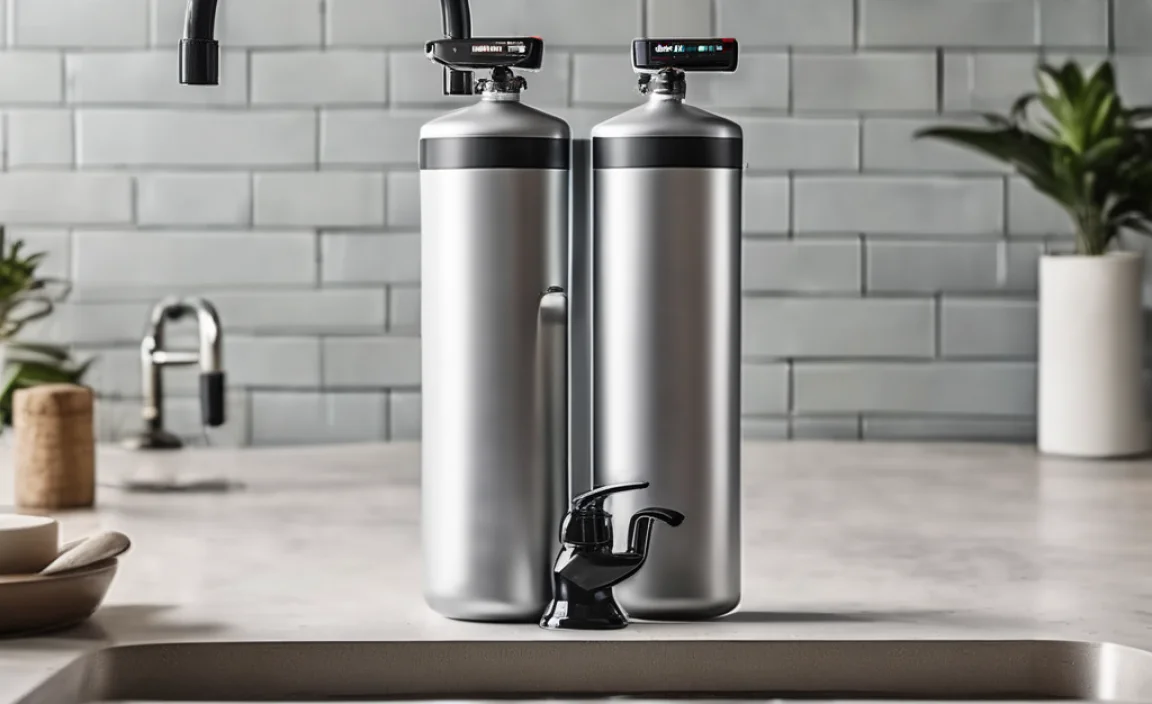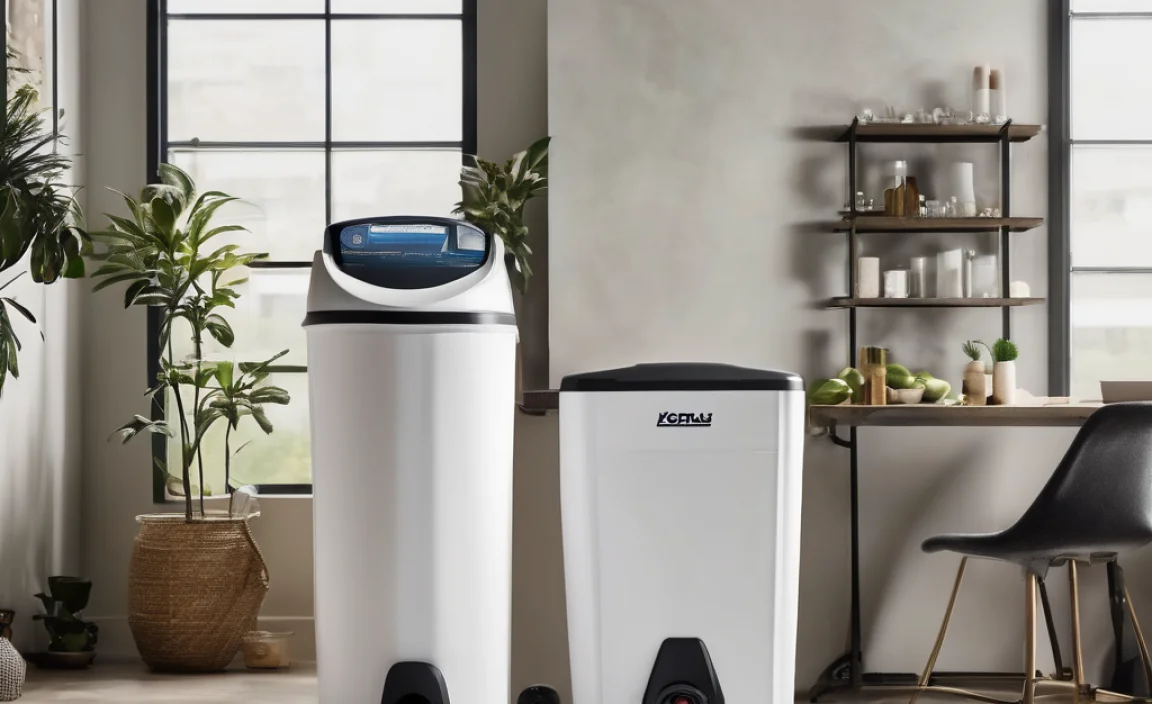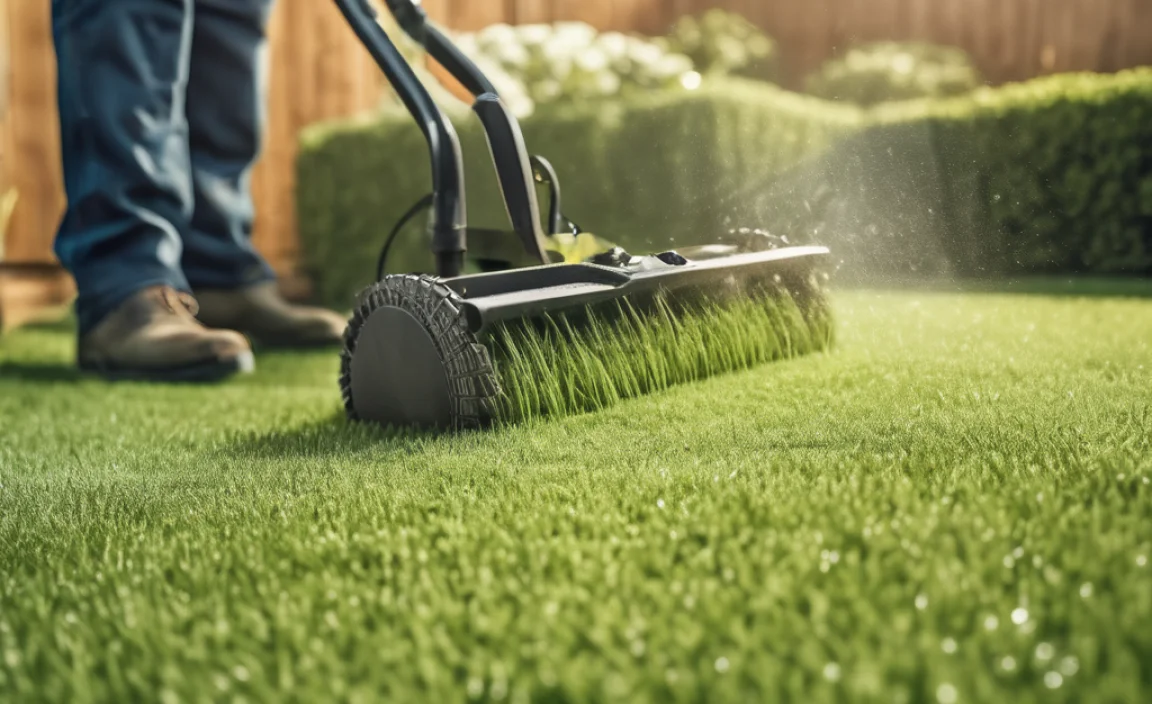Quick Summary: The best water softener depends on your home’s size and water hardness. For most homes, a salt-based softener like the Fleck 5600SXT is a reliable choice. If you’re eco-conscious, consider a salt-free system like the Aquasana SimplySoft. Always check your local water hardness and consumption before buying!
Hard water can be a real pain. It leaves spots on your dishes, dries out your skin, and can even damage your pipes and appliances. Luckily, a water softener can solve these problems. But with so many options, picking the right one can feel overwhelming. Don’t worry, I’m here to help you find the perfect water softener for your home. Together, we’ll explore different types, sizes, and features. Ready to say goodbye to hard water woes? Let’s get started!
What is Hard Water and Why Should You Soften It?

Hard water is water that contains high levels of minerals, specifically calcium and magnesium. While it’s not harmful to drink, it can cause a lot of annoying problems around the house.
- Scale Buildup: Hard water leaves a scaly residue on faucets, showerheads, and inside pipes.
- Skin and Hair Issues: It can make your skin feel dry and itchy, and your hair dull and lifeless.
- Appliance Damage: Over time, hard water can damage appliances like water heaters, washing machines, and dishwashers.
- Inefficient Cleaning: Hard water reduces the effectiveness of soaps and detergents, meaning you have to use more to get things clean.
Softening your water removes these minerals, preventing these issues and saving you money in the long run. Soft water means less soap scum, healthier skin, and appliances that last longer. It’s a win-win!
Types of Water Softeners: Which One is Right for You?

There are two main types of water softeners: salt-based and salt-free. Let’s break down the pros and cons of each.
Salt-Based Water Softeners
Salt-based water softeners use a process called ion exchange to remove calcium and magnesium. They replace these hard minerals with sodium (salt) ions.
How They Work:
- Hard water flows into the softener tank.
- The water passes through a resin bed coated with sodium ions.
- Calcium and magnesium ions are attracted to the resin, replacing the sodium ions.
- Soft water exits the tank and flows to your home.
- Periodically, the system regenerates, flushing the resin bed with a salt brine to recharge it with sodium ions.
Pros:
- Effective: Very effective at removing hardness minerals.
- Proven Technology: Been around for decades and is well-understood.
- Cost-Effective: Can be cheaper upfront than some salt-free systems.
Cons:
- Salt Usage: Requires regular salt refills.
- Wastewater: Produces wastewater during regeneration.
- Sodium Concerns: Adds a small amount of sodium to your water, which may be a concern for some people.
Salt-Free Water Softeners (Water Conditioners)
Salt-free water softeners, also known as water conditioners, don’t actually remove minerals. Instead, they change the minerals’ structure so they can’t stick to surfaces and cause scale buildup.
How They Work:
- Hard water flows into the softener tank.
- The system uses a process called Template Assisted Crystallization (TAC) to convert calcium and magnesium into microscopic crystals.
- These crystals are stable and don’t stick to pipes or appliances.
- The treated water flows through your home, and the crystals are eventually flushed away.
Pros:
- Eco-Friendly: No salt needed and no wastewater produced.
- Maintenance-Free: Requires very little maintenance.
- Healthy Minerals: Doesn’t remove beneficial minerals from your water.
Cons:
- Not True Softening: Doesn’t actually remove hardness minerals.
- Less Effective: May not be as effective in very hard water situations.
- Can be Expensive: Can be more expensive upfront.
Which Type Should You Choose?
If you have very hard water and want the most effective solution, a salt-based softener is likely the better choice. If you’re concerned about the environment, want to avoid salt, and have moderately hard water, a salt-free system could be a good option.
Top Water Softener Recommendations

Okay, let’s get to some specific recommendations. These are some of the best water softeners on the market, based on performance, reliability, and value.
Salt-Based Water Softeners
- Fleck 5600SXT: This is a workhorse. It’s reliable, efficient, and has a digital control valve that’s easy to program. It’s a great choice for most homes.
- Whirlpool WHES30E: A solid option for smaller households. It’s compact, efficient, and comes from a trusted brand.
- GE GXSH40V: This model is known for its SmartSoft technology, which learns your water usage patterns and optimizes regeneration for efficiency.
Salt-Free Water Softeners
- Aquasana SimplySoft: A popular salt-free option that uses TAC technology. It’s great for those who want to avoid salt and wastewater.
- Springwell FutureSoft: This system not only conditions water but also removes chlorine and other contaminants.
- iSpring ED2000: A budget-friendly salt-free option that’s easy to install and maintain.
Key Features to Consider

When choosing a water softener, keep these features in mind:
- Grain Capacity: This refers to the amount of hardness minerals the softener can remove before needing to regenerate. Choose a capacity that matches your water hardness and usage.
- Flow Rate: This is the amount of water the softener can process per minute. Make sure it’s high enough to meet your household’s peak water demand.
- Regeneration Type: Some softeners regenerate based on a timer, while others use a metered system that regenerates based on actual water usage. Metered systems are more efficient.
- Certifications: Look for NSF certifications to ensure the softener meets industry standards for performance and safety.
- Warranty: A good warranty can protect you from unexpected repairs or failures.
Sizing Your Water Softener

Choosing the right size water softener is crucial for optimal performance. Here’s how to calculate the grain capacity you need:
- Determine Your Water Hardness: Get a water test kit or contact your local water provider to find out your water hardness in grains per gallon (GPG).
- Estimate Your Daily Water Usage: Multiply the number of people in your household by the average daily water usage per person (about 80 gallons).
- Calculate Daily Grain Removal: Multiply your water hardness (GPG) by your daily water usage (gallons).
- Determine Softener Capacity: Multiply your daily grain removal by the number of days you want between regenerations (e.g., 7 days). This gives you the minimum grain capacity your softener should have.
Example:
- Household of 4 people
- Water hardness: 10 GPG
- Daily water usage: 4 people x 80 gallons/person = 320 gallons
- Daily grain removal: 10 GPG x 320 gallons = 3200 grains
- Softener capacity (for 7 days): 3200 grains/day x 7 days = 22,400 grains
In this case, you’d want a water softener with a grain capacity of at least 22,400 grains. It’s often better to go slightly larger than necessary to ensure you have enough capacity.
Installation: DIY or Hire a Pro?
Installing a water softener can be a DIY project for some, but it depends on your plumbing skills and comfort level. Here’s a quick guide:
DIY Installation:
Tools You’ll Need:
- Pipe cutter
- Soldering torch (if working with copper pipes)
- Pipe wrench
- Adjustable wrench
- Teflon tape
- Fittings and connectors
- Level
Steps:
- Turn Off the Water Supply: Locate the main water shut-off valve and turn it off.
- Drain the Pipes: Open the lowest faucet in your house to drain any remaining water from the pipes.
- Cut the Main Water Line: Choose a suitable location for the softener and cut the main water line.
- Install Bypass Valves: Install bypass valves to allow you to bypass the softener if needed.
- Connect the Softener: Connect the softener to the water line using the appropriate fittings.
- Connect the Drain Line: Connect the drain line to a nearby drain.
- Connect the Brine Tank (for salt-based systems): Connect the brine tank to the softener.
- Turn On the Water Supply: Slowly turn on the water supply and check for leaks.
- Program the Softener: Follow the manufacturer’s instructions to program the softener.
If you’re not comfortable with plumbing or soldering, it’s best to hire a professional plumber. A professional installation ensures the softener is installed correctly and meets local plumbing codes. You can find qualified plumbers through online directories like the Better Business Bureau or by asking for recommendations from friends and neighbors. BBB
Professional Installation:
Hiring a pro typically costs between $300 and $800, depending on the complexity of the installation. While it’s an added expense, it can save you time, hassle, and potential headaches down the road.
Maintenance Tips for Longevity
Proper maintenance is essential to keep your water softener running smoothly and extend its lifespan. Here are some tips:
Salt-Based Softeners:
- Refill the Salt Tank: Check the salt level in the brine tank regularly and refill as needed. Use high-quality salt pellets or crystals.
- Clean the Brine Tank: Once a year, clean the brine tank to remove any sediment or buildup.
- Inspect the Injector and Venturi: Check the injector and venturi for clogs or debris and clean as needed.
- Monitor Water Hardness: Periodically test your water to ensure the softener is working correctly.
Salt-Free Softeners:
- Replace the Filter (if applicable): Some salt-free systems have a pre-filter that needs to be replaced periodically. Follow the manufacturer’s instructions.
- Check for Leaks: Regularly inspect the system for leaks and address them promptly.
- Monitor Water Quality: Periodically test your water to ensure the system is working effectively.
Troubleshooting Common Issues
Even with proper maintenance, you might encounter some issues with your water softener. Here are some common problems and how to fix them:
| Problem | Possible Cause | Solution |
|---|---|---|
| Softener Not Softening Water | Low salt level, faulty control valve, clogged injector | Refill salt, check/replace control valve, clean injector |
| Excessive Salt Usage | Brine line leak, faulty float valve, incorrect settings | Repair brine line, replace float valve, adjust settings |
| Water Leaks | Loose fittings, cracked tank, damaged O-rings | Tighten fittings, repair/replace tank, replace O-rings |
| Salty Taste in Water | Backflow from brine tank, drain line blockage | Check/repair backflow preventer, clear drain line |
If you can’t resolve the issue yourself, it’s best to consult a qualified technician.
Cost Analysis: Upfront vs. Long-Term
Let’s talk about the cost of owning a water softener. There are upfront costs (the purchase and installation) and ongoing costs (salt, maintenance, and energy).
Upfront Costs:
- Water Softener: $500 to $2000, depending on the type and size.
- Installation: $300 to $800 for professional installation.
Ongoing Costs:
- Salt: $5 to $20 per month for salt-based softeners.
- Maintenance: $50 to $100 per year for cleaning and repairs.
- Energy: A small amount for the softener’s control valve.
While the upfront cost can seem high, remember that a water softener can save you money in the long run by reducing soap and detergent usage, preventing appliance damage, and improving water heating efficiency. According to the EPA, water-efficient products can significantly lower utility bills. EPA WaterSense
FAQ: Your Water Softener Questions Answered
1. How do I know if I have hard water?
Look for signs like scale buildup on faucets, dry skin, and difficulty lathering soap. You can also get a water hardness test kit or contact your local water provider.
2. Is softened water safe to drink?
Yes, softened water is generally safe to drink. The amount of sodium added during the softening process is usually minimal.
3. Can I use potassium chloride instead of salt in my water softener?
Yes, potassium chloride is a salt alternative. It’s a good option if you’re concerned about sodium intake or have plants that are sensitive to sodium.
4. How often should I regenerate my water softener?
The regeneration frequency depends on your water hardness and usage. Metered systems regenerate automatically based on water consumption, while timer-based systems need to be set manually.
5. Do salt-free water softeners remove minerals from the water?
No, salt-free water softeners don’t remove minerals. They change the minerals’ structure to prevent them from forming scale.
6. How long does a water softener last?
With proper maintenance, a water softener can last 10 to 15 years.
7. What is NSF certification, and why is it important?
NSF certification means that the water softener has been tested and certified by NSF International to meet industry standards for performance and safety. Look for NSF certification to ensure you’re buying a quality product.
Conclusion
Choosing the best water softener for your home is a big decision, but hopefully, this guide has made it a little easier. Remember to consider your water hardness, household size, and personal preferences when making your choice. Whether you go with a salt-based or salt-free system, a water softener can make a big difference in your home, saving you money and improving your quality of life. So, take the plunge and say goodbye to hard water woes! You’ve got this!

